As addressed in previous Legal Beats, in order to qualify for a Paycheck Protection Program (“PPP”) second draw loan, the borrower must demonstrate that they had a 25% reduction in gross revenues, comparing a 2020 calendar quarter to a comparable 2019 calendar quarter (i.e., comparing the 2nd quarter of 2020 to the 2nd quarter of 2019, 3rd quarter to 3rd quarter, etc.), in order to qualify for a PPP second draw loan. As was the case with PPP first draw loans, borrowers must certify in good faith that “current economic uncertainty makes the loan request necessary to support the ongoing operations of the borrower”.
Originally, during the early days of the PPP program, the “necessity” requirement created much uncertainty, as numerous large businesses, such as Shake Shack and Ruth Chris Steakhouse, applied for and obtained tens of millions dollars of PPP loans, resulting in the SBA reminding borrowers of their good faith certification of necessity.
As a result, in a FAQ issued by the SBA last spring, it stated that loans with an original principal balance of less than $2 million will be deemed to have made the required certification concerning the necessity of the PPP loan request in good faith.
Fast forward to 2021. Fortunately, many businesses are seeing their fortunes improve and are in a much better financial condition than they were in the 1st and 2nd quarters of 2020, when the pandemic first struck. While such businesses may have had a 25% reduction in gross revenues, consistent with the requirements for a second draw PPP loan, many borrowers are not sure whether to apply for the loan, due to their ability to make the required good-faith certification regarding the necessity of their loan request.
Based upon updated FAQs, issued by the SBA on March 3, 2021, it has stated that because second draw PPP loan borrowers much demonstrate that they have had a 25% reduction in gross revenues, all second draw PPP loan borrowers will be deemed to have made the required certification concerning the necessity of the loan in good faith. The loan amounts received by borrowers for first draw PPP loans and second draw PPP loans will not be aggregated.
Please be reminded that the deadline filing your application for the first draw or second PPP loan is March 31, 2021. The American Rescue Plan, signed into law the other day by President Biden, is not expected to extended this deadline. As such, if you are considering applying for PPP loan, you should do so soon as possible!
Update FAQ 46. Question: How will SBA review borrowers’ required good-faith certification concerning the necessity of their loan request?
Answer: When submitting a PPP application, all borrowers must certify in good faith that “[c]urrent economic uncertainty makes this loan request necessary to support the ongoing operations of the Applicant.” SBA, in consultation with the Department of the Treasury, has determined that the following safe harbor will apply to SBA’s review of First Draw PPP Loans with respect to this issue: Any borrower that, together with its affiliates,58 received First Draw PPP Loans with an original principal amount of less than $2 million will be deemed to have made the required certification concerning the necessity of the First Draw PPP Loan request in good faith.
SBA has determined that this safe harbor is appropriate because borrowers with First Draw PPP Loans below this threshold are generally less likely to have had access to adequate sources of liquidity in the current economic environment than borrowers that obtained larger loans. This safe harbor will also promote economic certainty as PPP borrowers with more limited resources endeavor to retain and rehire employees. In addition, given the large volume of PPP loans, this approach will enable SBA to conserve its finite audit resources and focus its reviews on larger loans, where the compliance effort may yield higher returns.
Importantly, borrowers with First Draw PPP Loans greater than $2 million that do not satisfy this safe harbor may still have an adequate basis for making the required good- faith certification, based on their individual circumstances in light of the language of the certification and SBA guidance. SBA has previously stated that all PPP loans in excess of $2 million, and other PPP loans as appropriate, will be subject to review by SBA for compliance with program requirements set forth in the PPP Interim Final Rules and in the Borrower Application Form. If SBA determines in the course of its review that a borrower lacked an adequate basis for the required certification concerning the necessity of the loan request, SBA will seek repayment of the outstanding First Draw PPP Loan balance and will inform the lender that the borrower is not eligible for loan forgiveness. If the borrower repays the First Draw PPP Loan after receiving notification from SBA, SBA will not pursue administrative enforcement or referrals to other agencies based on its determination with respect to the certification concerning necessity of the loan request. SBA’s determination concerning the certification regarding the necessity of the loan request will not affect SBA’s loan guarantee.
For Second Draw PPP Loans, all borrowers must certify in good faith that “[c]urrent economic uncertainty makes this loan request necessary to support the ongoing operations of the Applicant.” Because Second Draw PPP Loan borrowers must demonstrate that they have had a 25% reduction in gross revenues, all Second Draw PPP Loan borrowers will be deemed to have made the required certification concerning the necessity of the loan in good faith. The loan amounts received by borrowers for First Draw PPP Loans and Second Draw PPP Loans will not be aggregated.

